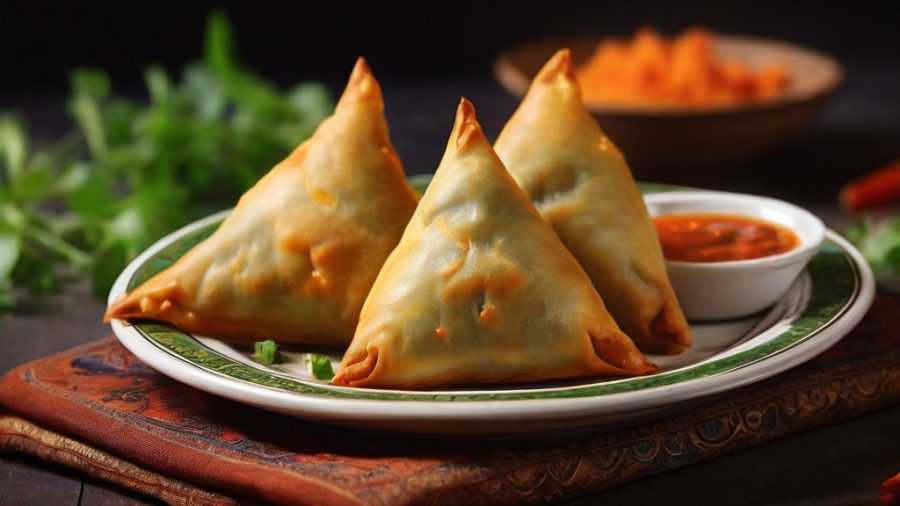Vegetable Samosa: A Delicious Dive into Indian Cuisine

Vegetable samosa, a quintessential Indian snack, is a delightful treat that has won hearts worldwide. Known for its crispy exterior and flavorful filling, this vegetarian dish embodies the rich culinary heritage of India. With its origins tracing back to the Indian subcontinent, the vegetable samosa has evolved into a beloved appetizer and snack, celebrated for its taste and versatility.
A Symphony of Flavors:
At the heart of a good vegetable samosa lies its filling, a harmonious blend of vegetables and spices. The typical recipe includes cubed potatoes, peas, carrots, and onions, all cooked to perfection. These ingredients are seasoned with a blend of spices that create the distinctive taste of samosa.
The Magic of Garam Masala:
A key component of the samosa’s tantalizing flavor is garam masala, a fragrant spice mix that is a staple in Indian cooking. Garam masala typically includes coriander, cumin, cloves, pepper, cardamom, cinnamon, and bay leaves. Each spice in this blend contributes to the complex flavor profile, making the samosa a flavorful experience with every bite.
The Art of Making Samosas:
Creating the perfect vegetable samosa involves several steps, each crucial to achieving the ideal taste and texture. Here’s a simple outline of the process:
- Preparing the Filling:
- Ingredients: Cubed potatoes, peas, carrots, onions, and spices (garam masala, turmeric, chili powder, salt, and fresh coriander).
- Method: Boil the potatoes until tender. Sauté onions in oil until golden, then add the carrots and peas, cooking until soft. Mix in the boiled potatoes and season with garam masala and other spices.
- Making the Dough:
- Ingredients: All-purpose flour, oil, water, and salt.
- Method: Combine the flour and salt, then add oil and mix until the mixture resembles breadcrumbs. Gradually add water to form a firm dough. Let it rest for at least 30 minutes.
- Assembling the Samosas:
- Method: Roll out the dough into thin circles and cut each into halves. Form a cone with each half and fill it with the vegetable mixture. Seal the edges carefully to ensure the filling doesn’t spill out during frying.
- Frying:
- Method: Heat oil in a deep pan. Fry the samosas until golden brown and crispy. Drain excess oil on paper towels.
Serving and Enjoying:
Vegetable samosas are best enjoyed hot, served with tangy tamarind chutney or refreshing mint yogurt dip. They make an excellent appetizer for gatherings, a satisfying snack, or even a light meal when paired with a fresh salad.
A Cultural Staple:
In India, samosas are more than just a snack; they are a cultural staple. Whether bought from a street vendor or made at home, samosas bring people together, often accompanied by a cup of masala chai. Their popularity has transcended borders, making them a favorite in many countries, adapting to local tastes and preferences.
Conclusion:
The vegetable samosa is a testament to the rich flavors and culinary traditions of India. Its combination of a crispy shell and spicy, savory filling offers a taste experience that is both satisfying and memorable. Whether you are a seasoned cook or a novice in the kitchen, making vegetable samosas is a rewarding endeavor that brings a piece of India to your table. Enjoy the process, savor the flavors, and share the joy that comes with every bite of this beloved Indian delicacy.

+ There are no comments
Add yours